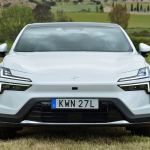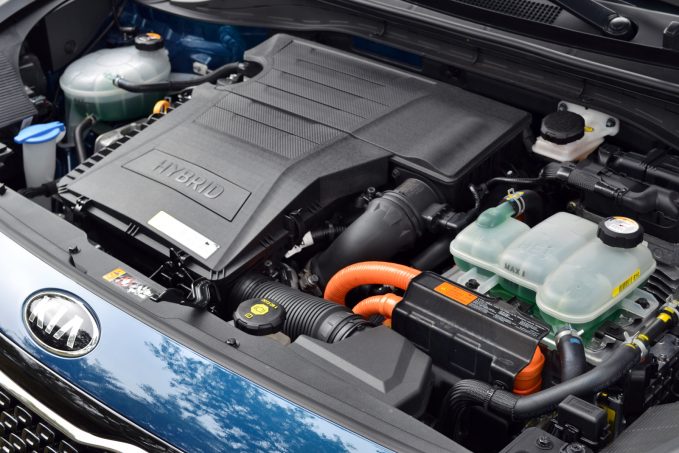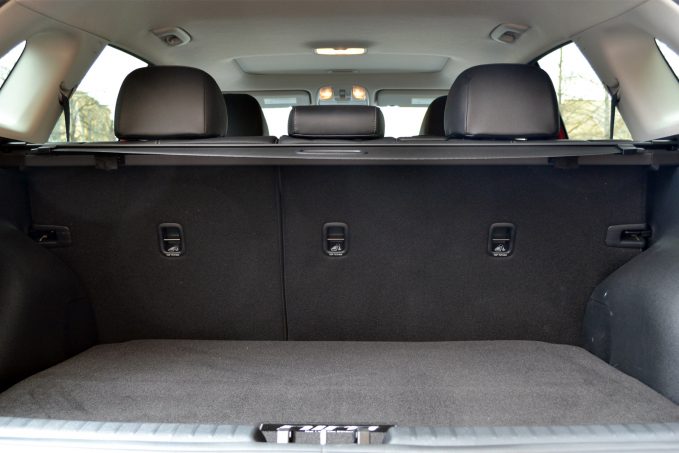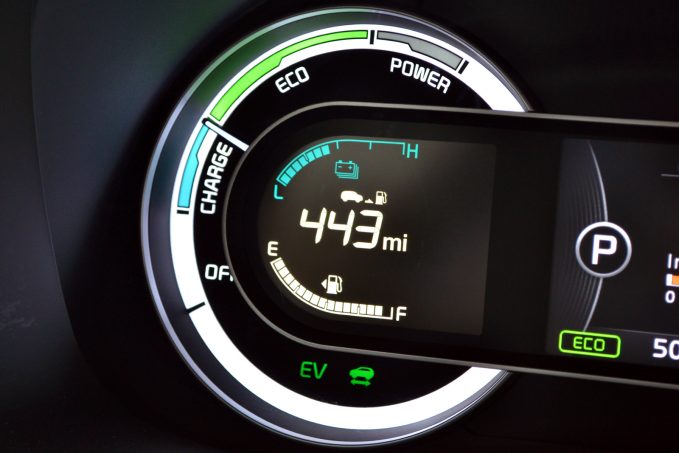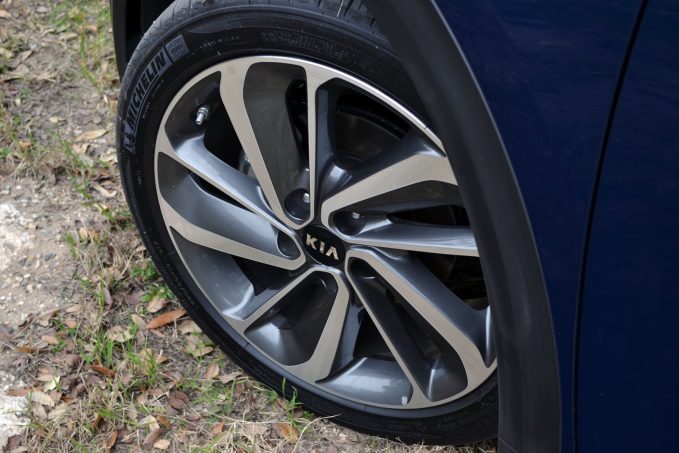I’m not much of a gambling man, but if I were, I’d have to think the 2017 Kia Niro is a pretty safe bet.
With a seemingly limitless ceiling on how many crossovers the market can bear, it’s all but guaranteed to sell based on body style alone. Add in fuel consumption that’s almost on par with the Toyota Prius, and the Niro has an appeal that’s all its own.
As the first dedicated hybrid crossover on the market, the Niro occupies a unique space that’s only barely been tapped by the likes of the hybrid versions of both the Toyota RAV4 and the U.S.-exclusive Nissan Rogue. But unlike both of those, which burn only slightly less fuel than their purely gas-powered siblings, the Niro has what it takes to do battle with the Prius sedan at the pumps with the added bonus of the space of a compact crossover.
Starting From Scratch
Hybrid crossovers, even front-wheel-drive ones, aren’t exactly fuel efficient, and that’s because they’re big, tall and heavy. That’s why the 2017 Kia Niro takes that trio of previously prerequisite conditions and tosses them right out the window.
Unlike both gas-electric versions of the RAV4 and Rogue, the Niro is built on a platform that was developed specifically for hybrid applications. Those underpinnings, which are shared with the upcoming Hyundai Ioniq, allow the Niro to be more slight and squat than a traditional crossover. That means the Niro is hunkered down like a car, riding low to the ground in a bid to improve efficiency.
ALSO SEE: 2017 Nissan Rogue Hybrid Review
Also helping on the efficiency front is the Niro’s powertrain, which, like its platform, is shared with its sister Ioniq sedan that’s soon to hit the market. It combines a 1.6-liter gas engine with a small electric motor that works with a rear-mounted battery pack to add electrons to the drive, while power is transferred to the pavement through a six-speed dual clutch automatic transmission.
And this is where the Niro’s only major concession comes into play. Because unlike both of the Rogue and RAV4 hybrid models, it’s only available with front-wheel drive. While leaving all-wheel-drive off the option sheet surely helps the Niro achieve its impressive fuel economy numbers — combined ratings range from 43 mpg (5.5 L/100 km) to 50 mpg (4.7 L/100 km) depending on trim — and shouldn’t be a deal-breaker, it will surely steer some buyers away.
Maximizing Space
Doing without all-wheel drive and its perceived peace of mind does, however, have an additional benefit. Without it, engineers were able to mount the Niro’s lithium-ion battery pack beneath the rear seats. While most hybrids have their beefy battery packs mounted in the cargo area, doing so cuts into available cargo space. Situating the Niro’s battery where it is does nothing to impact the space behind the rear seats. Cargo room sits at a reasonable 19.4 cu-ft (549 liters) with the second row of seats upright as a result, and 54.5 cu-ft (1,543 liters) with them folded. Making the most out of the available space, the Niro’s tailgate opening is nice and wide, while its rear wheel wells barely cut into cargo volume thanks to cleverly packaged rear suspension.
ALSO SEE: Midsize Three-Row Crossover Comparison Test
Compared to the larger Kia Sportage, to which the Niro, at 171.5 inches (4,356 millimeters) from bumper-to-bumper, gives up about five inches (127 mm), that cargo capacity seems less than stellar. But with a wheelbase that stretches longer than the Sportage’s, at 106.3 inches (2,700 mm), passenger volume is nearly on par with its larger stablemate.
With 40.1 inches (1,019 mm) of headroom up front and 39.1 inches (993 mm) in the back, there’s plenty of space to accommodate adults in either row. Likewise, 37.4 inches (950 mm) of legroom and 55.2 inches (1,402 mm) of shoulder room in the back means there’s enough space for children and adults alike to get comfortable, while the rear doors swing open widely to make accessing the second row as painless as possible.
Well-Appointed Interior
The Niro’s cabin isn’t just spacious, but it’s also pretty easy on the eyes. The layout is simple and clean, and is reminiscent of the rest of Kia’s current crop of cars and crossovers. It features buttons that are easy to see and use, spelling out in plain terms exactly the purpose they serve. The same goes for the touchscreen infotainment system, which runs Kia’s UVO interface and continues to be one of the easiest to use on the market.
Most models of the Niro make do with a seven-inch screen, while top grade models get a larger eight-inch unit that features native navigation. Regardless of screen size, Apple CarPlay and Android Auto smartphone interfacing is standard and allows devices to be run through the infotainment system to access maps and messaging, as well as certain other apps, on the road with less distraction. Drivers also benefit from a bright 4.2-inch display in the gauge cluster, as well as a unique gauge that displays efficiency-related info including estimated remaining driving range.
Efficient Drive
Get behind the wheel of the Niro, and the entire package comes together tremendously well. Not much noise emanates from under the hood even with the gas engine running, while switching between fuel sources on the fly occurs without much fuss. It’s almost Prius-like in its execution, with the added bonus of a true geared transmission as opposed to an electric drive unit or continuously variable automatic.
ALSO SEE: 2017 Toyota Prius Prime Review
Power is delivered smoothly, with a combined system output of 139 horsepower and 195 lb-ft of torque to work with, and the Niro accelerates seamlessly from both a standing start or in a passing situation. Don’t expect blistering performance here, but don’t expect the Niro to fall flat on its face either. The powertrain occasionally left a desire for a little more giddyup on the highway, but the transmission’s sport mode certainly helps lift the Niro’s spirits and provide the extra push needed to pass slower traffic. When it comes time to slow Niro, the regenerative brakes don’t feel like, well, regenerative brakes, and simply make the crossover feel slightly heavier than it is.
The chassis does ride a little on the rigid side and doesn’t provide much flex, but the overall dynamics more closely resemble those of a car and not a crossover — and that’s a good thing. The suspension setup — independent at all four corners, including four links around back — impresses with its ability to smooth rough roads, while body roll is almost non-existent despite the somewhat numb and disconnected steering feel. The only real complaint from the cabin is the road noise that makes its way inside, which can be slightly excessive at times.
The Verdict: 2017 Kia Niro Review
When it comes to being both a crossover and a hybrid, the 2017 Kia Niro finds itself with few rivals. That list shrinks even further when you factor in its price. Base models start at just $22,890 ($24,995 in Canada), strategically undercutting the Toyota Prius by a hefty margin. Overall, it’s an impressive offering that executes Kia’s bang-for-your-buck strategy to near perfection. Add in its outstanding fuel economy, and the Niro looks like a pretty safe bet.




